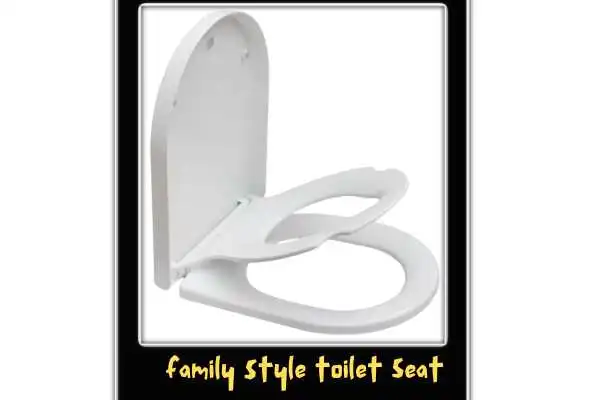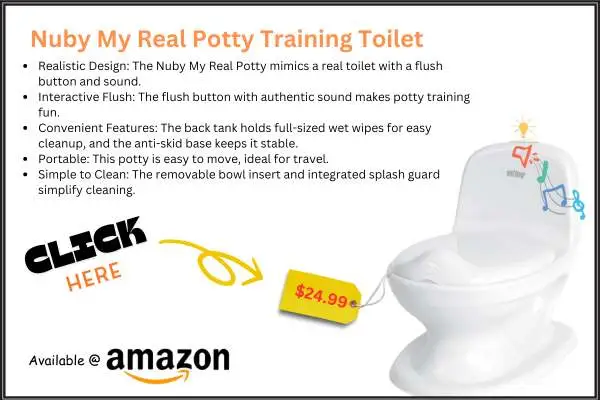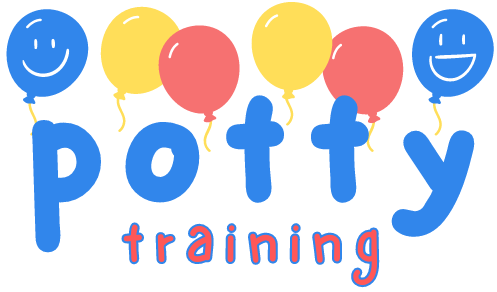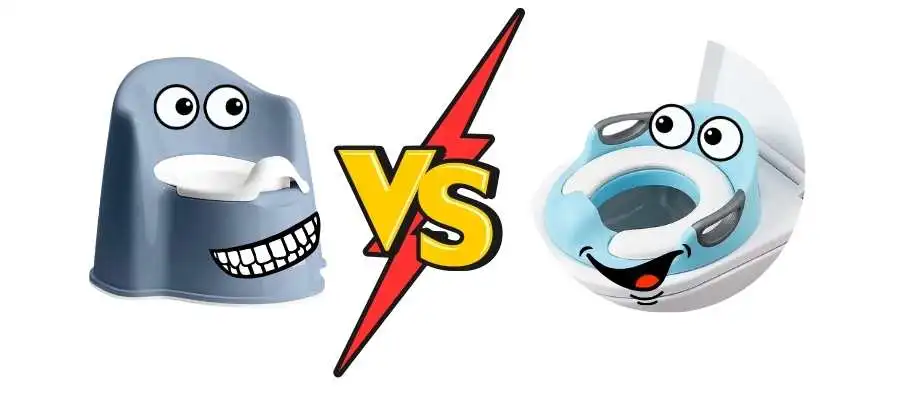Potty training is a big step in your child’s development, and using the right equipment can make a huge difference. The two main tools for potty training are potty chairs and toilet training seats.
To choose the best one for your child, you should know the pros and cons of each. In this article, we’ll explore each option in detail to help you make the best choice for your little one. So let’s get started!
What is Potty Training?
Potty training is when kids learn to use the toilet instead of diapers. This usually starts when they are between 18 months and 3 years old, depending on how ready they are. Parents need to help their kids through this change, and picking the right potty training tools can really help them succeed
Related Article: 6 Signs Your Child is not Ready for Potty Training: Lets Explore!
Why Picking the Right Seat Matters
The seat you choose for potty training can affect how your child feels about the whole process. The right seat can make things less scary and more fun, which is good for both you and your child. But if the seat is wrong, it can lead to frustration, setbacks, or even fear. A big part of successful potty training is making sure your child feels comfortable and safe, so it’s important to choose between a potty chair and a toilet training seat carefully.
Potty Chairs
Let’s learn about potty chairs to see what they’re all about and figure out if they’re the best choice for your kid.
What is a Potty Chair?
A potty chair is a little seat that toddlers use during potty training. It usually comes in different designs, colors, and with popular cartoon characters to catch a child’s interest. Potty chairs are generally made from lightweight plastic, so they’re easy to move and carry around.

Reasons to Choose a Potty Chair
One big benefit of a potty chair is that it’s easy to move around. Because they’re lightweight, you can place them anywhere in the house, so your child can use them wherever they feel at ease.
Potty chairs are also made for small children, which means they’re the right size and height for toddlers. This helps lower the risk of falling, and kids can firmly plant their feet on the floor. This makes them feel more comfortable and secure while they’re using the potty
Reasons for Not Choosing a Potty Chair
Even though potty chairs have their advantages, there are some downsides. Since they’re lightweight, they can tip over easily. If a child falls or has a bad experience with a potty chair, they might not want to use it anymore.
Another problem is that if you use a potty chair outside the bathroom, it can give kids the wrong idea about potty training, which also involves things like washing hands and flushing the toilet
Where to Use a Potty Chair
Potty chairs work best in the bathroom because this helps kids understand that the bathroom is the place to use the toilet.
However, they can also be useful if you need to move them around, like when traveling or if someone has limited mobility. Just make sure the potty chair is stable and on a flat surface to avoid tipping over.
Toilet Training Seats
Now that we’ve discussed potty chairs and covered their pros and cons, let’s turn our attention to toilet training seats and see if they might be a better choice.
What is a Toilet Training Seat?
A toilet training seat, also known as a toilet seat reducer, is an attachment that sits on top of a standard toilet seat to reduce its size to a child-friendly diameter. This type of seat aims to transition children to using the adult toilet by providing a more secure and smaller seating area.

Reasons to Choose a Toilet Seat
One of the biggest advantages of a toilet training seat is that it eliminates the transition between a potty chair and a standard toilet. This can reduce resistance when your child is ready to use public restrooms or toilets at friends’ houses.
Additionally, training seats fit securely on standard toilet seats, providing a stable base for children. This can reduce the fear of falling in and encourage them to use the same toilet as their parents, fostering a sense of accomplishment.
Reasons for Not Choosing a Toilet Seat
However, there are some downsides to toilet training seats. If not installed correctly, they can pinch your child’s bottom, leading to discomfort and fear.
These seats can also move around or tilt, causing instability. If you have only one toilet in the house, having to install and remove the training seat frequently can become cumbersome, affecting overall convenience.
Where to Use a Toilet Training Seat
Toilet training seats are ideal for children who are ready to use a standard toilet but need additional support. These seats are best suited for homes with multiple toilets or where there is a designated toilet for the child. A good practice is to use a family-style toilet seat, which has a built-in smaller seat for children, offering more stability and reducing the need for frequent adjustments.

If you’re still unsure about which option is best for your child, there’s a portable seat that might interest you. It’s a potty chair that looks like a real toilet and even makes a flushing sound. This way, your child gets the feel of a regular toilet without using the actual one, which can make it easier when they eventually move to a standard toilet.

Choosing the Best Option for Your Child
Factors to Consider
Choosing between a potty chair and a toilet training seat involves a few key considerations. Think about your child’s age, how far they’ve developed, how comfortable they are with the bathroom, and what works best for you. If your child is already fine with a regular toilet and you prefer fewer transitions, a toilet training seat might be ideal. But if your child seems anxious or could use more encouragement, starting with a potty chair could be a better option.
Which is Right for Your Child?
To determine which is right for your child, evaluate your bathroom setup and the overall environment. If you prefer a method that mimics adult toileting from the start, a toilet training seat offers that advantage. If your child benefits from gradual transitions and portability, a potty chair might be the way to go. Ultimately, the key is to create a comfortable and supportive environment that fosters positive experiences during potty training.
Related Article: Teaching a Child How to Wipe After Poop
Avoiding Common Mistakes
Avoid using potty chairs outside the bathroom, as this can disrupt the concept of toileting in a designated space. Be cautious with toilet training seats to prevent pinching or instability. If you’re using a potty chair, ensure that you transition to a standard toilet as soon as possible to avoid resistance later on.
Building a Successful Potty Training Routine
Create a routine that works for your family and includes consistent use of potty chairs or toilet training seats. Use a family-style toilet seat with a footrest for added comfort and stability. When dealing with resistance, remain patient and understand that setbacks are a natural part of the process.
Final Thoughts: Toilet Training Seat vs Potty Chair
In short, both potty chairs and toilet training seats come with their pros and cons. The best choice depends on your child’s readiness, your home setup, and how you prefer to approach potty training. No matter which one you pick, the secret to successful potty training is to be consistent, patient, and create a supportive environment.

